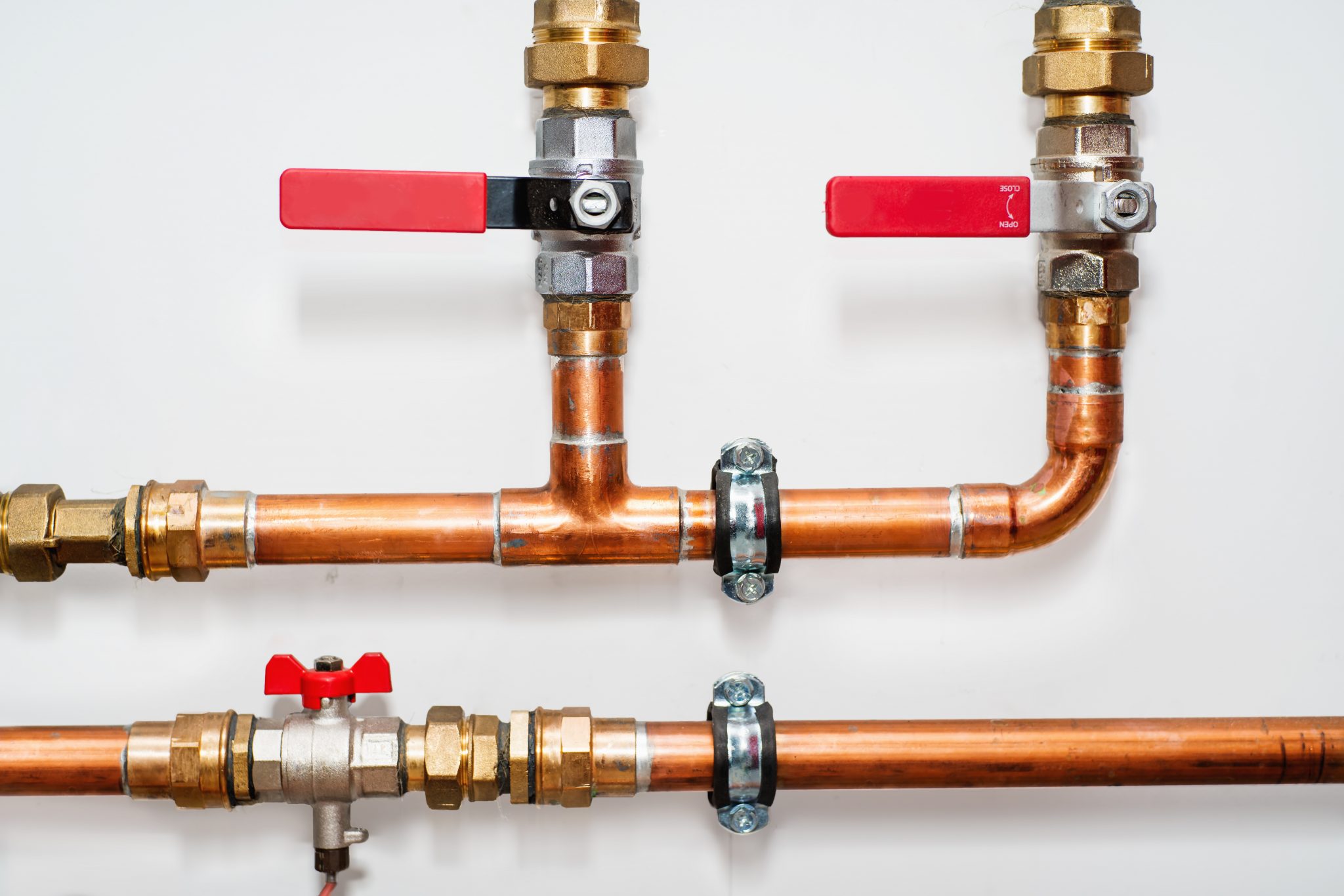
After nearly a century of use in commercial and residential applications, copper tube pipes have stood the test of time. It’s durable, non-corrosive, and long-lasting—with a maximum lifespan of 70 years. The tricky thing about copper pipes is deciding which type to install. You must consider factors like how thick the pipe should be and what your intended application is. If you need help making a decision, keep reading below to understand the benefits of each type.
Table of Contents
4 Types of Copper Pipes & Applications
1. Type K Copper Pipe
With an average thickness of .65 inches, Type K is the thickest type of copper pipe. It comes in both flexible and rigid options and is on the pricier end of the copper piping spectrum.
Type K is used for water and oil transportation, fire protection, and HVAC applications. Its primary use is for main water lines and underground lines due to its durability to withstand intense pressure.
2. Type L Copper Pipe
With an average thickness of .40 inches, Type L is thinner than Type K. Like Type K, it comes in both flexible and rigid options. It’s also the most commonly used type of copper pipe due to its enhanced versatility and flexibility.
Type L is used for indoor plumbing, fire safety, and HVAC purposes. Technicians use it primarily to repair and replace old interior branch water lines, but it’s also effective for outdoor applications.
3. Type M Copper Pipe
Type M is thinner and cheaper than Types K and L. For example, a ½ inch pipe is generally .28 inches thick. Unlike Types K and L, Type M only comes in a rigid option.
Type M is used for household water distribution and vacuum systems. It’s ideal for repairing, extending, and replacing interior branch water lines. Before investing in this type of copper piping, keep in mind that it doesn’t adhere to all plumbing codes, so it’s best to consult with those who know best.
4. Copper DWV Piping
Copper DWV piping is the thinnest type, with a 1 ½ inch pipe having a thickness of only .42 inches. Like Type M, this copper pipe only comes in a rigid option. As a result of its thinness and rigidness, copper DWV piping can only be used for above-ground purposes because it’s not strong or flexible enough to withstand extreme pressure.
Copper DWV piping is used for plumbing drains and vents, specifically DWV (drain-waste-vent) plumbing lines. It’s most commonly found in older homes.
How You Can You Tell if a Copper Pipe Is Leaking
It’s not uncommon for copper pipes—especially older ones—to leak from time to time. When water escapes through pinhole leaks in the pipes, a blue-green stain forms. These pinhole leaks, which are difficult to detect, often form when increased acidity in the water causes long-term corrosion.
How to Find a Leak in any Type of Copper Pipe
In addition to a blue-green stain, here are some other signs you may notice if your copper pipes are leaking:
- Increased water bill
- Patches of unusually green grass on your lawn
- Leaky appliances or toilets
- Decreased water pressure
- Visible water damage in the ceiling or on walls
To confirm whether your copper pipes are leaking, schedule a professional inspection. The plumber will check for any pinhole leaks that may have formed.
Is It Common for Pipes to Leak?
While it’s normal for copper pipes to leak on occasion, they shouldn’t leak all the time. If you notice frequent leaks, it’s time to replace your copper pipes.
Reliable Water Line Repair & Installation Services
Whether you need your existing copper piping repaired or new copper piping installed, Fenwick Home Services is here to simplify the process. We guarantee quality materials and expert installations, so your copper piping lasts for years to come. Whatever service you need, schedule an appointment today by booking online or calling us at (904) 440-1507.

